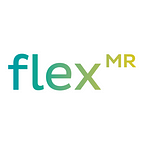Exploring the Connection Between Political, Social and Brand Loyalty
Over the past few months, we have been researching how the British public express loyalty — not just to brands, but in all facets of their daily lives. What we found was a direct connection between the ways in which political, social and brand decisions are made — one that calls into question whether loyalty is something that can be influenced, or whether it even exists at all.
The full report, Tribes: An Exploration of the Connection between Political, Social, and Brand Loyalty, is available to download for free. The 24 page paper challenges traditional assumptions of consumer loyalty, by exploring the connection between, and the influences of, the decisions we make in political, social, and commercial scenarios in order to get a sense of how loyal we truly are. Reframing the concept of loyalty in terms of decision-making and tribal influences will allow brands to fully understand the different facets of loyalty, and thus, can redesign the strategies put in place to attain and retain brand loyalty from their customers.
Methodology and Findings
The data that was the foundation of this report was gathered by a survey with a base sample of n=1280 British participants of whom voted either Leave or Remain within the 2016 Brexit Referendum. This important event allowed us to discover two different groups who make decisions differently, and thus compare this decision-making process to other scenarios within social and commercial contexts. Interestingly, those who voted Remain had more loyalist traits within their actions than those who voted Leave.
We believe that the discovery of two groups, the Loyal and the Disconnected (as represented by the Remain voters and Leave respectively within this report), prompts a much needed re-evaluation of what influences the concept of loyalty within an individual, and what brands can do to take advantage of this new opportunity.
Tribes and Identity
Within our report it has been identified that there is a distinct link between the decisions we make and our identity. Or so we thought. The statement is true in regards to the Loyal, but not so much for the Disconnected.
The Loyal tribe we have found do absorb their decisions firmly into their identity, and thus changing their decision would require changing a part of their identity, which is one reason why they are more loyal to their judgements. Whereas, the Disconnected don’t tie their decisions into their identity, thus allowing them to change their mind and switch between options much easier, having a more fluid and superficial approach to their decision-making process. But whether we are a part of the Loyal or Disconnected groups, our decision-making process isn’t an individual activity.
Another key insight that has been generated is that the individual identity is actually made up of a variety of group, or tribal, identities. These tribal identities are found within a variety of facets within our lives and situational factors, with the most influencing tribe by far being family and friends as 4 out of 5 participants stated that everyone in their household voted the same way during the Brexit referendum.
Other influencing tribes are social tribes such as media and news sources (10.2%), and political tribes such as the Labour or Conservative parties and the Brexit Remain and Leave tribes. The influence the tribes exert over the individual is entirely dependent on how much trust is placed within the tribe, which explains why familial and friend tribes have so much more influence over the decision-making process than any political or social tribes. So with the majority of influences defined and explored further within the report, what does this mean for loyalty?
Questioning Consumer Loyalty
Well, as it turns out: loyalty is fickle. This is true no matter which group, Loyal or Disconnected, we consider ourselves to be a part of. However, there is a varying degree of fickleness between the two groups. The Loyal are more likely to remain loyal for a longer period of time, giving a brand time to correct a poor experience before leaving, but only just; even less of the Disconnected would allow an offending party that luxury with most participants displaying Disconnected traits allowing less than a month for an offending party to right itself before leaving. Even those who display Loyalist traits will only tolerate so much before switching to a different brand, as 60% of all consumers would not stay with a brand for longer than 6 months if receiving a consistently poor experience.
Interestingly though, it is the Disconnected who see themselves as more loyal than the Loyal, with 69% of participants who voted Leave viewing themselves as Loyal as opposed to 66% of Remainers. This indicates a perception gap between the perceived nature and the real actions of our participants, which could be problematic for brands looking to do further research customer loyalty unless taken into account. However, it could be assumed that this perception gap is due to the different definitions of Loyalty that each group has.
But now that the characteristics, motivations, and behaviours have been laid out within our report for the two groups, brands can use this in order to retain the loyalty of those who tie it into their identity and work to understand how to attain loyalty from those who are easily changeable.
Download the Report
One of the most important insights we drew from our data, is that our decision-making process transcends situational barriers and so can be applied across the board. But this does not make us predictable in the slightest. While this blog provides a brief overview, there is a lot more detail that can be found within the report itself. To find out more, download our report here.
The original version of this article appeared on the FlexMR Insight Blog and can be accessed here.
